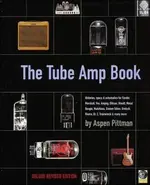L
LeadPaint
New member
Occasionally I forget to turn my amplifiers to standby before turning them off, I just hit the power switch. The amps have survived this so far.
Is there any danger in directly turning off a tube amplifier?
Is there any danger in directly turning off a tube amplifier?


 ...but it does reveal the origins and use...and it's appartently not to protect the tubes, assuming this guy really knows what he's talking about...and he sure seems to.
...but it does reveal the origins and use...and it's appartently not to protect the tubes, assuming this guy really knows what he's talking about...and he sure seems to.
